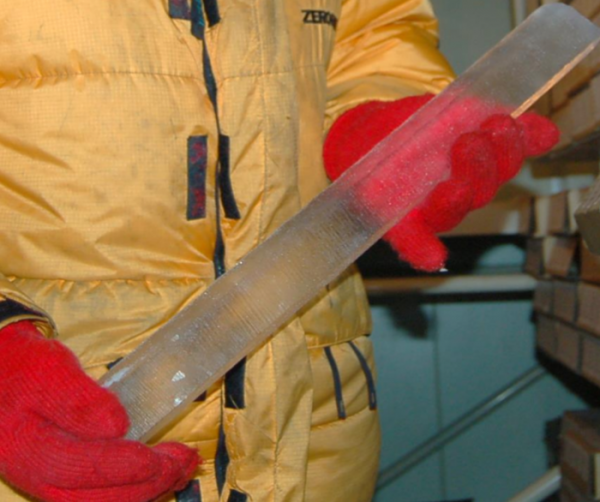On the massive sheets of ice that stretch across Greenland and Antarctica, the temperature is so low that not even the summer sun can melt the snow deposited onto them. As the snow accumulates without melting and settles deeper into the ice sheet, it traps air from the atmosphere, which forms small air bubbles when the snow transforms into ice. Over centuries or millennia, the ice builds up, increasing the pressure on and dropping the temperature in the bubbles, until the trapped atmospheric molecules convert into cage-like crystals, preserving the ancient air samples for hundreds of thousands of years. These crystals, called air-hydrate crystals, could reveal how the Earth’s atmosphere, and climate, has changed over hundreds of thousands of years—if their composition can be accurately measured.
Previous measurement methods were limited to a couple of elements, such as oxygen and nitrogen. Now, an international research team has developed a new approach to identify more elusive, previously unconfirmed constituents, such as argon, which could help reconstruct a more precise understanding of past climates. They published their approach and their findings—including the first direct discovery of argon in air-hydrate crystals—in the Journal of Glaciology.
“The air bubbles in an ice core are the only known paleoenvironmental archive of the actual ancient atmosphere with a time axis in the depth direction,” said first author Tsutomu Uchida, an Associate Professor in the Faculty of Engineering at Hokkaido University. He explained that argon could be extracted from the ice via melting or cutting, but its location in the undisturbed ice was a mystery. “If we can understand where argon is located in ice, we can improve our understanding of the movement of gas molecules in ice and contribute to improving the accuracy of environmental reconstruction.”
Read more at: Hokkaido University
An ice core from the Greenland ice sheet (Photo Credit: Tsutomu Uchida)


